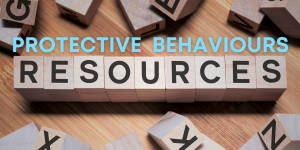

Have you ever read a rhyming book and tripped awkwardly over the sentence structure and words written back the front just so the verse rhymes? That’s not to say we can’t be inspired by the great Dr Seuss who wrote nonsensical rhymes with made-up words. But even Dr Seuss knew that metrical patterns rule, which still cause children and adults to laugh and smile reading his memorable sing-song anapaestic tetrameter style.
“But I like to be here. Oh, I like it a lot!”
Said the Cat in the Hat to the fish in the pot.
“I will NOT go away. I do NOT wish to go!
And so,” said the Cat in the Hat, “So so so …
I will show you another good game that I know!”
From the ‘Cat in the Hat’ by Dr Seuss
Children’s book authors suggest that it is not that the big publishing companies do not like rhyming picture books they love them if the rhyme and meter are perfect.
Rhyming books for babies and younger children are wonderful. The perfect pattern of repetition and sing-song like rhyme captures their imagination, and why when I wrote ‘Lottie’s Big Feelings’ in prose, I was determined to re-write the story in rhythm.
I worked with a rhyming expert and after four edits and comments suggesting I reconsider my decision and write in prose, I paused my project and signed up for an online rhyming workshop. After the course, I submitted my rhyming story for an assessment with an international rhyming editor. When they replied and asked for the original prose story, I asked why?
I was surprised by their response with the simple reality that my story was stronger in prose. Writing in rhyme would also restrict the way that I was writing the story. After several edits, I loved the results. The story had a rhymical feel with a whimsical element of Florence Flamingo speaking in rhythm adding to her flamboyant character. The rhyme would not have worked on the other two characters. And, as a storyteller, I would not have the freedom to describe hats with pearls popping out tiny curls, shrugging fury shoulders and red sparkly shoes and fluffy tutus.
Four reasons why you need to consider writing narrative rather than rhyme:
If you are going to write rhythming picture books, I suggest learning the art of writing meter and rhyme. It is a skill and getting connected with the right experts, who are also children’s book authors will teach you that there are various kinds of rhyme and help you to find the right one.
I was fortunate to meet experts in the rhyming field who guided me to write this series in prose, but as a storyteller finding my stronger version in my next series just might be rhyme.
Lottie’s Big Feelings Picture Book
If you would like support with rhyming your story, I suggest Jacking Hosking’s who is an Australian rhyming expert. Jackie’s Rhyming Manuscript Editing Service

Hello and welcome to my blog.
I love writing and sharing my journey as an author and encourage others to write their stories too.